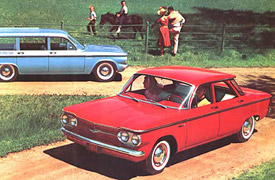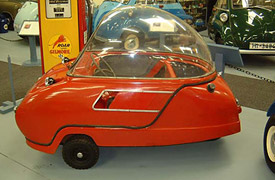Time Magazine’s Worst cars of 1961-1966
Time Magazine tackled a monumental task by narrowing down the worst of the worst vehicles ever made. They compiled a list of 50 Worst cars of all time broken down by the years they were produced.
Here is the sixth installation of articles targeting the bottom feeders of the automotive world.
Ampicar 1961

Image from Time
The Ampicar sounds like something a superhero would drive, although it wouldn’t save many innocent drowning victims. Not only did it make a bad car, but it made a bad boat as well.
The big downfall was the lack of any real motion, at all.
Top speed being 7 miles per hour on the water, the vehicle couldn’t move fast enough to outrun the fact that it wasn’t watertight.
A bilge pump was the one thing that kept the vehicle afloat and if it couldn’t keep up, the Ampicar sunk. Believe it or not almost 4000 of these boat/cars were built between 1961 and 1968, and some of them are still cruising the high seas.
Corvair 1961

Image from Time
The rear engine Corvair earned itself a bad name. And although there are advantages to a rear-mounted engine, there are also many drawbacks.
Beyond the obvious scare of a rear end collision, the heavy back end caused dangerous spin outs. Nazi officers were banned from driving early-model rear-engine vehicles such as the Tatara during World War II because so many of them were killed behind the wheel. The Corvair follows the same idea and the same danger.
Chevrolet did nothing to fix the rear suspension problems and lived to regreat it when Ralph Nader wrote his book Unsafe at Any Speed, which nailed them to the wall over the Corvair’s issues.
Peel Trident 1966

Image from Time
This funky looking vehicle looks like it is straight out of the Jetsons. Designed on the Isle of Man in the 1960’s it was part of the evolution of previous models, and sat at 4 feet and 2 inches in length.
It is one of the world’s smallest cars, but still the Peel Trident made absolutely no sense, and looked like something an eccentric child would have built.
Bottom line, it had no practical application and was never made to be a highly used vehicle.
